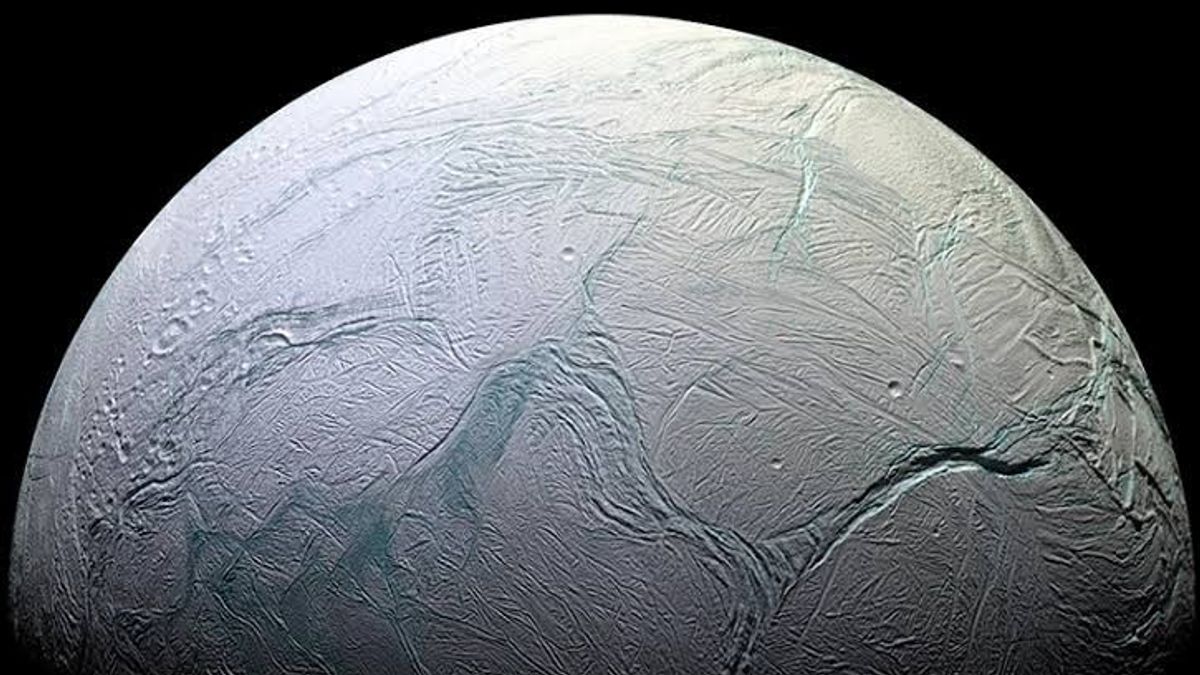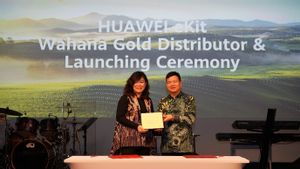JAKARTA - As a result of firing a giant clump into space, the Moon in Saturn, namely Enceladus, is known to have the potential to accommodate conditions that support life.
Based on data from NASA's Cassini mission, scientists managed to reveal that Enceladus, theoretically, has all the chemicals needed to support living things.
"But now, these new results reveal clear chemical signatures of a large amount of phosphorus salt in ice particles ejected into space by small lunar clumps. The first time this important element was discovered in oceans beyond Earth," said study author Frank Postberg, a planetary scientist at the Free University of Berlin.
The giant ocean water claimed to contain phosphorus, an important element in genetic and cellular materials. This chemical is the second most abundant mineral in the human body.
"Fosphorus in the form of phosphate is very important for all life on Earth. Life as we know it will not exist without phosphate," said Postberg.
"And we have no reason to assume that the potential for life in Enceladus, if it exists, must be fundamentally different from Earth," he added.
Mereka, para ilmuwan menemukan phosphorus dengan memeriksa data yang dikumpulkan oleh Cassini dari survei 13 tahun sistem Saturian, menurut sebuah penelitian yang diterbitkan minggu ini di jurnal Nature.
Cassini fell and shattered in Saturn's atmosphere in 2017. But before that, spacecraft had collected data by passing through the Enceladus geyser which continued to erupt at its south pole and Saturn's E-ring, also containing particles detached from the Moon.
Under its ice crust, Enceladus has a warm subsurface ocean more than 30 miles deep, blanketing the entire moon.
The eruption at its south pole spewed ice particles into space, where research spacecraft such as Cassini could easily study the chemical composition of the ocean without diving or even touching the lunar surface.
Previous missions showed that Enceladus had all the essential building blocks of life, such as carbon, hydrogen, nitrogen, oxygen, and sulfur, but not with phosphorus until the new research emerged.
The discovery provides no evidence of aliens in Enceladus. However, the presence of phosphorus removes major barriers to any life that may develop there, as quoted by Popsci and Engadget, Friday, June 16.
Enceladus orbits deep in Tata slSurya, about 800 million miles from Earth. So, in the future, planetary scientists will have to comb through data collected by Cassini (while investigating Saturn and its moons) to conclude what the Moon really looks like.
The English, Chinese, Japanese, Arabic, and French versions are automatically generated by the AI. So there may still be inaccuracies in translating, please always see Indonesian as our main language. (system supported by DigitalSiber.id)













